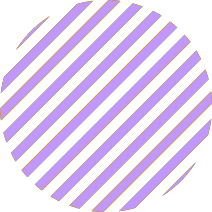“Ramp it Up!” The Smithosian Institute project to bring light to the thriving Native skateboard culture. The nationwide touring art exhibit was first launched in 2017. Taking the exhibit across Indian Country, “Ramp it Up!” promoted the positive, liberating skateboard culture brought to Native youth.
Decorative decks, skateboarders, designers, and Native Hip Hop culture collaborated in a hyper-compressed expressive agency of contemporary Native identity. “Ramp it Up!” formalized a resistance-free expression of Indigenous decolonization. Utilizing each area, decoloniality seeks to liberate (mental, physical, political, economic, educational, and spiritual). “Ramp it Up!” fostered a resurgence in self-determination and tribal sovereignty for disenfranchised Native youth.
Riding Through Identity
First witnessed in Native Hawaiian surfing culture, Native skateboard culture took the idea of riding the waves to riding the concrete. This is not a new concept, connecting surfing to skateboarding. What stands out is the transportation of this concept across Indian Country. Tribal communities well out of the purview of a body of water large enough to support surfing, or even the knowledge of surfing, have taken to skateboarding as an articulation of self-expression, bound with tribal culture. This manner of cross-cultural integration is also displayed with hoop dancers who take to breakdancing. There is a physical connection between these two visceral expressions. Where hoop dancing narrates a creation story by interlocking hoops (hoola hoops) together in complex designs while steadily dancing to the drum, and without the ability to pick up the hoops from the floor with their hands, these dancers transpose this flexible discipline to breakdancing.
The shared expressive conditions make these art forms suited for cultural exchange. Native dance includes music, traditional knowledge, and customs to respect all within a single expressive component. These foundations lend themselves to being transported across contemporary means of expression. For urban Native youth, skateboarding replaced the surf hype of the late 1950s, which spanned well across the following decades and saw a dramatic renaissance in the 1980s. The lack of water and the abundance of concrete, abandoned buildings, and a broken infrastructure, skateboarding brought a way for urban Native youth to find a means to share culture, remain active, and form community bonds, even across different tribal identities.
The restriction that held Native skateboard culture from exploding across urban Indian Country is access to equipment and the finances to purchase the often expensive gear and skateboard. These lived limitations contained this physical discourse to a minimum, making any support at this grassroots level a precious commodity.
Not stopping at the edge of economic instability, Native youth continued to seek out ways to combine old equipment to make a skateboard and expand deck art to contextualize identity. Graffiti is a visible, mobile art form. Deck art provides the same angle. Highly stylized and personalized designs and color combinations, deck art was able to surpass economic depression, which encouraged the ongoing growth of Indian skateboard culture.
What traditional art was for older generations, skateboard deck art paved the way for bridging older art styles with contemporary integration. This encouraged Native youth to learn about their traditional artistic forms and styles, and skateboard culture simultaneously. Once a design was applied to a deck, it was shared with the community. An easy way to speak across generations of tribal knowledge, customs, culture, traditions, and expressions. Setting aside the physical liberating feature that skateboarding brings, the ability to share deck art, intentional or by observation, demonstrates one’s connection to tribal ethics. Each of these elements, music/dance, art, and sharing community, underscores the relevance of contemporary tribal identity. For Native youth, the inclusion of skateboard culture into pre-existing tribal culture bonds together community acceptance, tribal connection, and physical participation. These positive agents outline a contemporary trajectory of tribal identity.
The CBC Radio podcast “Unreserved” provided an episode dedicated to Indigenous skateboard culture in Canada.
“For many Indigenous people, skateboarding is an active way to express yourself, and reclaim territory in unexpected ways…Indigenous skateboarders…are taking the sport onto the streets and into communities” (Unreserved, CBC Radio, October 2020/June 2021).
This podcast hosts Indigenous skateboard business owners, skaters, and community organizers/partners, who collectively comment on the positive power of skateboarding for Native/Indigenous youth. Skateboard culture moves away from the policy of resistance to make a difference, to one of decolonization, which operates individually and communally for a lexicon of liberation.
An interesting perspective on contemporary Native skateboard culture, in the podcast, comes from Hanwakan Blaikie Whitecloud, an entrepreneur who is also a skateboarder and fan. His position on how skateboard culture and community brought him to a new tribe, the Indigenous skateboard community.
Helping Kids, Supporting Culture
Gear Junkie published an article on June 9, about a Dine skatepark, which is in dire need of attention to continue supporting tribal youth.
“The Diné Skate Garden Project seeks to distribute 2,000 skateboards this fall — but it needs additional donations to reach its funding goal” (Gear Junkie, June 9).
The article, “Indigenous Shred: Fundraiser Seeks Help for Navajo Youth Skateboarding Program,” discusses how this tribal skatepark is a lifeline for Diné youth to stay active, off of drugs/alcohol, and gain a positive sense of culture and community.
“The Diné Skate Garden Project comes from Amy Denet Deal, founder of upcycled apparel and homeware brand 4KINSHIP” (Gear Junkie, June 9).
Years after the “Ramp it Up!” art exhibit, the resonating reality of Native skateboard culture remains bonded to tribal culture, customs, knowledge, traditions, and expressions.
“The brand [4KINSHIP] describes its ethos as honoring land, art, and kinship while creating economic opportunities for Indigenous communities” (Gear Junkie, June 9).
This commitment to the culture is what helped propel 4KINSHIP to become a cultural treasure. The support of tribal youth and the firm dedication to seeing how skateboarding changes, transforms, and saves lives stand as a testimony.
“Skateboarding is a transformative experience,” Denet Deal said in a press release. “We’re ready to make this vision a reality, but we need the support of our community to bring this impactful opportunity to life” (Gear Junkie, June 9).
Partnering with major skateboard companies, such as Rolling Thunder Supply Co., Denet Deal has part of the mechanics in place to help foster this opportunity for tribal youth. The lacking point is the fulfillment of their funding. 4KINSHIP is facing a budget deficit of $100,000 that it needs to raise. The initial campaign raised $9,000, but this is a far cry from the total needed to expand on the current Diné Skate Garden and provide the costs of skateboards, helmets, and logistics. During 2023, Dine Skate Garden Project distributed 5,000 skateboards, for free, to the community. The partners hold the same line of commitment as Denet Deal.
“Skateboarding doesn’t just change lives — it saves them,” [Steve] Douglas [owner of Rolling Thunder Supply Co.] said in a news release. “What 4KINSHIP is doing is incredible, and we all need to come together to help impact even more lives” (Gear Junkie, June 9).
The Dine Skate Garden Project has an online option for donations, https://www.pledge.to/GOSKATE.
The bottom line is the unification of skateboarding with a positive sense of tribal culture, customs, knowledge, traditions, and expressions.
Amy Denet Deal has a dream for tribal youth. “Ramp it Up!” had a dream for Native skateboarding. Both find each other in the urban rez, through skateboard culture, and capture the agency for a positive tribal identity.



